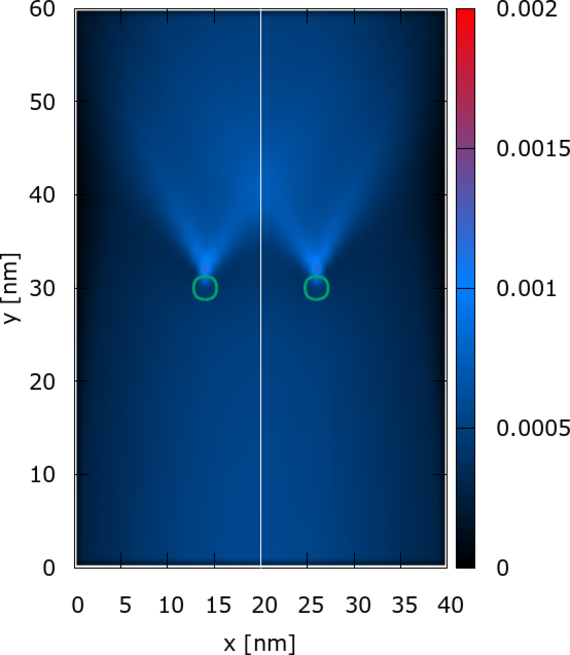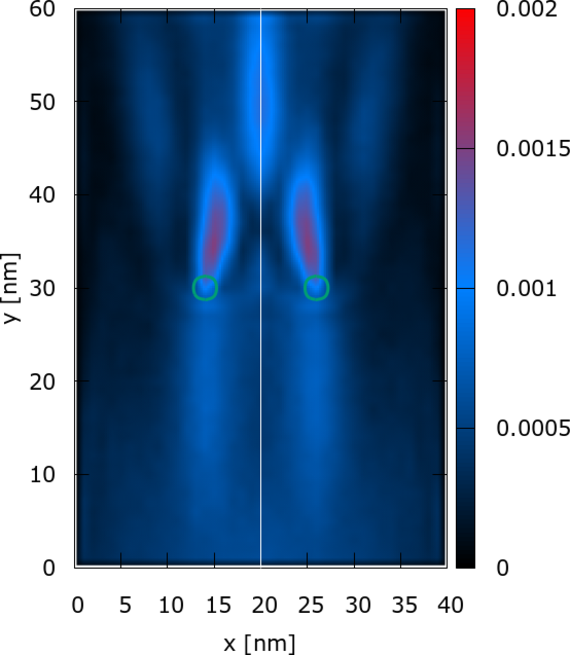 |
|
Biography
Josef Weinbub holds a bacherlor's degree in electrical engineering, a master's degree in microelectronics, and a doctoral degree in technical sciences from the Technische Universität Wien. He was a visiting researcher at the EPCC, University of Edinburgh and at the Device Modelling Group, University of Glasgow, Scotland, UK as well as at Silvaco Inc, Santa Clara, CA, USA. He leads the Christian Doppler Laboratory for High Performance TCAD and investigates cutting-edge research problems in the area of micro- and nanoelectronics, focusing on high performance computational approaches.
Electron Interference in a Double-Dopant Potential Structure
Correctly describing and predicting quantum effects in nanoelectronic devices remains a key challenge. An attractive way to achieve this is to compare quantum with classical effects, enabling one to identify quantum-ness in the generated results. However, the transition from quantum to classical transport requires a principal change in the physical description. In contrast to classical processes comprised of elementary events associated with probabilities, the interplay of phases and amplitudes gives rise to interference effects that cannot be described as a cumulative sum of probabilities. A given quantum transport problem does not allow for a decomposition into separate subtasks, as suggested by the Matthiessen rule of classical transport, and needs to be treated in its entirety. Therefore, the interplay of seemingly simple processes, as for example electron evolution with Coulomb potentials, fundamentally differs when using a classical or a quantum description.
Here, we report a new advancement, also paving the way for building novel entangletronic devices. Based on ViennaWD and its Wigner signed particle approach - and its new support switching between quantum and classical transport - we analyze the current transport behavior with two attractive, i.e. pulling, dopants (modeled via Coulomb potentials) in a transport medium. Figs. 1 and 2 show the electron density after 200 fs for the case of only absorbing boundary conditions in the classical and quantum cases, respectively. Steady-state is reached after 160 fs. The green isolines indicate the potential energy of the dopants at 0.175 eV, which is approximately half of the peak energy level of the dopants.
In the classical case (see Fig. 1), no interference pattern can be recognized beyond the dopants (y > 30 nm) as the action of the electric force is local. Thus, for y < 30 nm, the density, after reaching the steady-state, is similar to the case of a freely evolving initial condition (i.e. the injected states). The effect of the two potentials is however noticeable behind the dopants. Right behind each dopant, the symmetry of the density distribution reflects the symmetry of the Coulomb force. Until approximately y = 40 nm, correlation effects in the density are observed, caused by the accumulation of electrons due to the modification of the trajectories that are in turn caused by the force.
In the quantum case (see Fig. 2), the non-local action of the quantum potential of the dopants affects the injected electrons right after injection. For y < 30 nm, the density follows the symmetry of the individual Coulomb potentials. The situation changes dramatically in the upper half (y > 30 nm), revealing a complicated picture of spatial resonances. These do not fade away as in the classical case, but maintain the peak pattern, which evolves with distance. The simple quantum effect of non-locality already significantly influences the physical behavior of the electron. The sensitivity of the effect is manifested in the change of the pattern with distance from the dopants. Therefore, even a small change in the potential of one of the dopants (e.g. peak energy, profile) will cause a dramatic change in the pattern. All in all, the spatial resonances, as well as their correlation with the dopant potentials, enable one to selectively manipulate the electron evolution, which, as already indicated, is attractive for future applications in entangletronics.

Fig. 1: Classical electron density ([a.u.]) 200 fs after the initial minimum uncertainty condition. The green circles are isolines at 0.175 eV of the Coulomb potentials modeling the dopants.

Fig. 2: Quantum electron density ([a.u.]) 200 fs after the initial minimum uncertainty condition. The green circles are isolines at 0.175 eV of the Coulomb potentials modeling the dopants.



